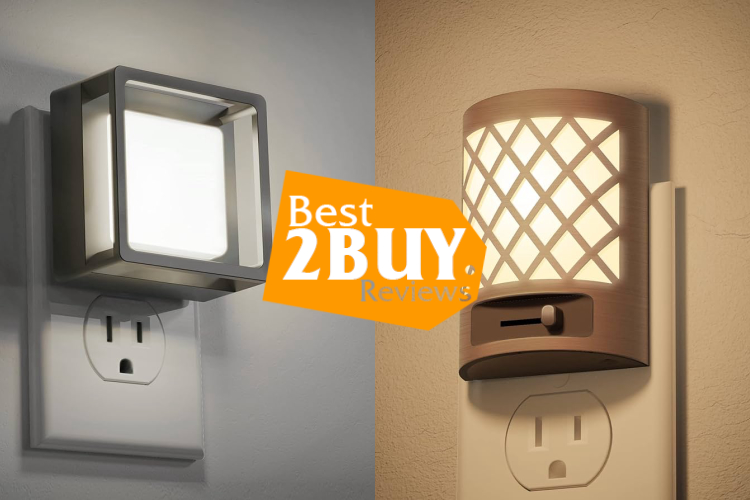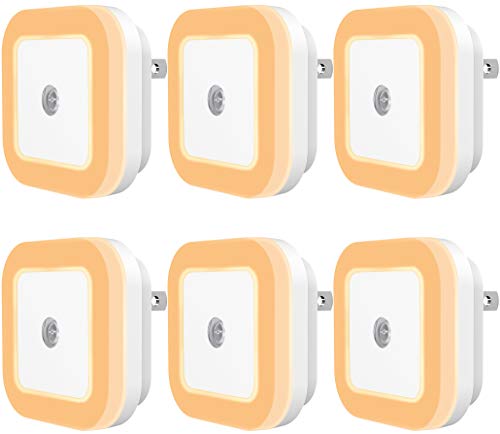Illuminating the Night: A Guide to Night Lights

- 1. Illuminating the Night: A Guide to Night Lights
- 1.1. What Are Night Lights?
- 1.2. Evolution of Night Lights
- 1.3. Functionality and Purpose
- 1.4. Types of Night Lights
- 1.5. Choosing the Right Night Light
- 1.5.1. Brightness
- 1.5.2. Power Source
- 1.5.3. Design and Aesthetics
- 1.5.4. Features
- 1.6. Conclusion
In the serene envelopment of the night, darkness falls, prompting the requirement for artificial illumination to penetrate the shadows. Night lights, once a basic requirement, have transformed into adaptable and visually appealing fixtures with diverse functions. Whether imparting a sense of safety or enhancing the atmosphere of spaces, these nocturnal illuminations have become an essential element of our nighttime surroundings.
What Are Night Lights?
Night lights are small, low-intensity lamps or fixtures designed to provide a dim and gentle illumination during the nighttime. They are commonly used in bedrooms, hallways, and other areas where low-level lighting is desired to navigate in the dark without disturbing sleep. Night lights are particularly popular in children's rooms to provide a sense of comfort and security.
These lights typically have a soft glow and come in various designs, including simple plug-in models, decorative shapes, and even ones with features like color-changing LEDs. Some night lights are equipped with sensors that automatically turn them on in low-light conditions and off in brighter environments, providing an energy-efficient solution.
Evolution of Night Lights
The history of night lights dates back centuries, with the earliest forms being simple candles or oil lamps. As technology advanced, electric lights took over, offering a safer and more convenient option. Today, night lights come in a myriad of forms, ranging from traditional plug-in models to cutting-edge smart devices that sync with our lifestyles.
Functionality and Purpose
Night lights serve multiple functions, each designed to enhance our nighttime experiences.
- Safety and Security: One of the primary purposes of night lights is to ensure safety in the dark. They illuminate hallways, staircases, and pathways, preventing accidents and providing a comforting glow to children who may be afraid of the dark.
- Sleep Aid: Certain night lights are crafted with sleep-friendly features, emitting a soft, warm glow that doesn't disrupt circadian rhythms. This can be particularly beneficial for those who struggle with sleep or for creating a relaxing bedtime routine.
- Decorative Ambiance: Night lights have become an integral part of interior decor, offering a subtle and enchanting ambiance. Whether in the form of stylish bedside lamps, decorative string lights, or creative shapes, night lights contribute to the overall aesthetic of a room.
- Guidance for Navigation: In unfamiliar surroundings, night lights act as beacons, guiding individuals through spaces without the need for harsh, overhead lighting. This is particularly useful in hotels, guest rooms, and unfamiliar homes.
Types of Night Lights
The variety of night lights available today is staggering, catering to diverse needs and preferences. Here are some common types:
- Plug-in Night Lights: These are the classic models that plug directly into electrical outlets. They are simple, cost-effective, and widely available in various designs.
- Battery-Powered Lights: Ideal for areas without easily accessible outlets, battery-powered night lights offer flexibility and can be placed wherever needed.
- Motion-Activated Lights: Equipped with motion sensors, these lights only activate when movement is detected. They are energy-efficient and well-suited for security purposes.
- Smart Night Lights: With the rise of smart home technology, night lights have also embraced connectivity. Smart night lights can be controlled via smartphone apps, programmed on schedules, and even change colors to suit different moods.
- Projector Night Lights: These lights use projection technology to cast images or patterns on walls and ceilings, creating a captivating visual experience.
Choosing the Right Night Light
Selecting the right night light depends on the intended purpose and personal preferences. Consider the following factors:
Brightness
The first and foremost consideration when choosing a night light is brightness. The intended purpose of the night light will determine the optimal brightness level. For safety and security in hallways, staircases, or children's rooms, opt for brighter lights that effectively illuminate the surroundings. On the other hand, if the purpose is to create a soothing ambiance or aid in sleep, softer, warmer hues with lower brightness are more appropriate. Consider adjustable brightness settings to cater to various scenarios and preferences.
Power Source
Night lights come with different power sources, each offering unique advantages. Consider the following options based on your specific needs:
- Plug-in: Ideal for permanent installations, plug-in night lights are convenient when electrical outlets are readily available. They ensure a consistent power source and eliminate the need for battery replacements.
- Battery-powered: These night lights are versatile and can be placed anywhere without worrying about electrical outlets. However, they require periodic battery replacements, so consider the convenience factor and ongoing costs.
- Rechargeable: Combining the benefits of plug-in and battery-powered options, rechargeable night lights are eco-friendly and cost-effective in the long run. They offer flexibility in placement and eliminate the hassle of frequent battery changes.
Design and Aesthetics
Night lights come in a myriad of designs and styles to complement various decors. Consider how the night light will fit into the existing aesthetic of the space. Whether you prefer a minimalist design, a whimsical shape for a child's room, or a decorative piece that doubles as a night light, there are numerous options available. The design should not only enhance the visual appeal of the room but also contribute to the overall atmosphere you want to create.
Features
When in the process of shopping for a night light, consider the following features:
- Motion Sensor: Opt for night lights equipped with motion sensors. These lights activate when someone enters their field of vision, eliminating the need for manual on/off switches. This not only conserves energy but also minimizes the impact on your utility bill. Ensure the night light has an appropriate detection radius, typically between 8-20 feet, depending on its location. For bedrooms, choose a light with low sensitivity to avoid sleep disruption, while areas like basements and hallways may benefit from a wider detection radius to prevent accidents in the dark.
- Low Lumens: Lumens measure light emission, and an ideal night light should provide sufficient illumination for safe navigation without disrupting your sleep-wake cycle. Look for night lights with fewer than 50 lumens. For larger spaces like basements and garages, consider bulbs ranging from 50-100 lumens to adequately light the area.
- The Right Color: Choose the night light color based on its location. Opt for red or orange lights in the bedroom to minimize sleep cycle disruption. Warm yellow lights work well in hallways and bathrooms, providing slightly better illumination. Avoid blue or white light, as it activates daylight receptors in your eyes, making it harder to return to sleep.
- Discreet Profile: Night lights should enhance safety without intruding on your home's space. Look for lights with a low or flat profile that sits flush against the wall when mounted or close to the power outlet if it's a plug-in option. This discreet design ensures minimal disruption while moving around your home at night.
Conclusion
Night lights have progressed significantly since their modest beginnings, transforming into essential elements that elevate our nighttime surroundings. Whether employed for safety, setting the mood, or aiding in sleep, a well-chosen night light has the ability to turn a dim area into a soothing and aesthetically pleasing retreat. With ongoing technological advancements, we anticipate a plethora of even more creative and adaptable night light choices to brighten our nights in the years to come.











